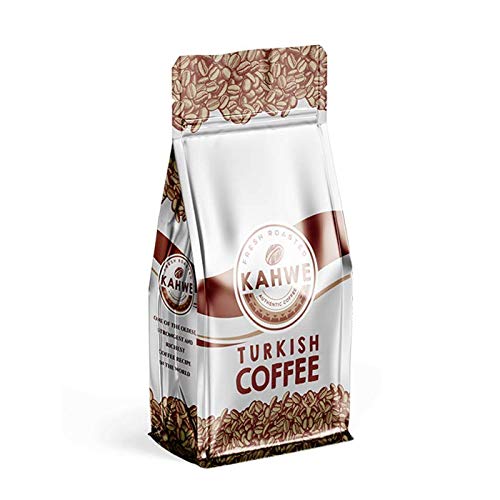Perfecting Turkish Coffee: The Correct Preparation

Turkish coffee or coffee prepared in a sand-heated ibrik has always been favored by novice coffee drinkers. This preparation method is one of the oldest means of obtaining an energizing drink and is even a tradition in certain cultures today.
Coffee prepared in an ibrik started to spread in the Middle East in the 15th century and is a method used especially in Arab countries, as well as countries such as Turkey and Greece.
Each of these countries have put their stamp on different methods and recipes, with Turkey being recognized for its sand preparation method.
Preparation of Turkish coffee
The term “Turkish coffee” is more often used to indicate different preparation methods that can vary in terms of time or the use of sugar and various spices. At the same time, this term is also associated with preparing coffee in hot sand.
If prepared correctly, Turkish coffee will contain a dense cream on the surface and will have an increased taste intensity. To obtain that cream, practice is needed, with many needing to acquire a certain dexterity in order not to burn it.
About this Item
- FRESH ROASTED IS BEST
- ROASTING TURKISH COFFEE
- 100% SATISFACTION GUARANTEE
| Brand | KAHWE FRESH ROASTED AUTHENTIC COFFEE |
| Item Form | Ground |
| Flavor | GROUND |
| Caffeine Content | caffeinated |
| Roast Level | medium_roast |
How to prepare?
Unlike classic coffee prepared in an ibrik, Turkish coffee can only be obtained in sand, in many ways and flavors.
Given the fact that it is differentiated by the use of sugar and spices, the variety of recipes increases considerably. The most classic and used recipe is the one where sugar is used in the infusion process.
To prepare a sand-made Turkish coffee, you need:
- An ibrik
- 6 grams of extra finely ground coffee
- 60 ml of water
- 1 teaspoon of sugar
Pour the water, coffee and sugar into the cold ibrik, homogenize, then cover ⅓ of the ibrik’s surface with heated sand. Wait until the coffee starts to boil and raise its volume, then remove the ibrik from the sand.
Some will perform multiple boils (it is considered boiling when its volume increases), then pour a teaspoon of cold water to force the coffee particles to settle more quickly at the bottom of the ibrik. Pour into special cups for this drink.
Traditionally, Turkish coffee is consumed with a specialty called lokum, a delicacy with rose water, lemon, mint, pistachio, cinnamon, or other spice flavors.
About this Item
- STIMULATE CREATIVITY, MOTIVATION & CONCENTRATION
- SUPERCHARGE COGNITION
- HEALTH CONSCIOUS BREW
- TOP SHELF RISK-FREE GUARANTEE
| Flavor | Mushroom Coffee |
| Brand | Join Top Shelf Grind |
| Item Form | Ground |
| Caffeine Content | caffeinated |
| Specialty | Usda Organic |
Important to Know About Turkish Coffee
- The grind should be extra fine to obtain the specific flavors of the ibrik. Compared to the grind for espresso, this should be 3-4 times finer. A home grinder can barely achieve this level.
- The goal of preparing coffee in a sand ibrik is to create a dense cream on the surface. To achieve this cream, some will boil the coffee multiple times to only pour the cream obtained by increasing the volume.
- Burying the ibrik in sand helps distribute heat evenly inside the drink, helping all coffee particles to infuse simultaneously.
- It contains the highest amount of caffeine compared to other coffee preparation methods. A cup can reach between 50-120 mg of caffeine depending on the coffee beans used.
- In 2013, the term “Turkish coffee” was recognized as a cultural heritage by UNESCO and introduced into the Representative List of the Intangible Cultural Heritage of Humanity.
Variations of Turkish Coffee Recipes
- The amount of coffee is adjusted depending on the desired flavor intensity. It can be doubled to get a stronger infusion.
- Turks have specific terms for the amount of sugar used in recipes. Sade means without sugar, intense. Az Sekerli means less than a teaspoon of sugar. Orta means medium amounts of sugar, a teaspoon. Sekerli means very sweet, 2 or more teaspoons of sugar.
- To get a dense cream and sweeter coffee, coffee is replaced with milk. In this case, the preparation time is shorter, caffeine is extracted in smaller quantities, and the extraction will have a sweet, caramelized taste.
- For a different taste, specific to Turkish culture, add 1/4 teaspoon of ground cardamom or various spices such as cinnamon, star anise, cloves, etc.
Turkish coffee is easy to prepare, its only uniqueness is the sand preparation or use of spices.
In certain cultures, even the material of the ibrik matters, those made of silver are considered even healing.














